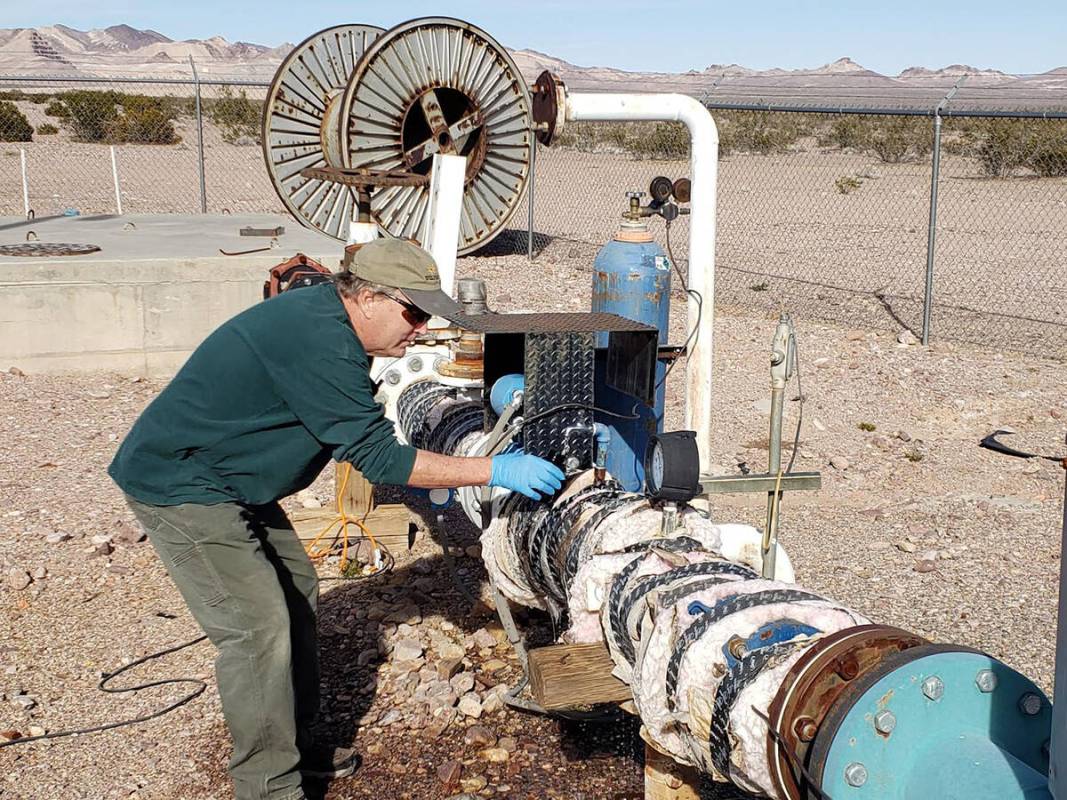
Everything leaves a legacy and for the former Nevada Test Site, where nuclear experiments were conducted for decades, that legacy is one of uncertainty.
Just how did those nuclear bombs affect residents in the surrounding area and more importantly, their groundwater?
To address concerns regarding the most precious of life’s resources, there are multiple monitoring programs in place. Nye County is one of the entities taking the lead in making sure any potential radioactive contamination is not making its way into the water supply utilized by residents of areas like Beatty and Amargosa. The results of the county’s most recent round of the Tritium Sampling and Monitoring Program, or TSaMP, continues to show that tritium remains undetectable in said waters.
“The 2022 program was the eighth year of sampling under an 11-year grant from the U.S. Department of Energy,” John Klenke, a geoscientist with Nye County’s Nuclear Waste Repository Office, announced this June. “The report indicates that all TSaMP samples collected in 2022 came back as non-detects, meaning they were below the detection limits of either 341 or 348 picocuries per liter.”
Tritium is a radioactive isotope, a form of hydrogen, which was generated in large quantities by underground nuclear testing at the Nevada Test Site, now renamed the Nevada National Security Site. Tritium becomes a constituent of a water molecule and therefore, it is one of the most mobile radionuclides. Due to this mobility, tritium, if detected, could give scientists an early indication that other, more potentially dangerous radioactive molecules could be making their way into the public’s water supply.
“The Safe Drinking Water Act limit for tritium in drinking water is 20,000 picocuries per liter,” Klenke detailed. “Picocurie is a term that scientists use to describe how much radiation and, therefore, how much tritium, is in the water.”
The 2022 samples for the TSaMP were pulled from a total of 17 wells and three springs in the vicinity of Beatty and Amargosa, both communities which are located downgradient of the Nevada Test Site. These sites include wells from the Nye County Early Warning Drilling Program, the Nye County Groundwater Evaluation Program and those owned by the DOE’s National Nuclear Security Administration Field Office, as well as five community wells and four private wells.
“Samples were taken between Nov. 14 and Dec. 15, 2022. The 2022 program sampled 10 ‘core well’ locations which are sampled each year, including nine wells and one spring. An additional 10 new locations, including eight wells and two springs, were also sampled,” Klenke said. “Samples were analyzed using the standard tritium analysis method, unenriched, by Radiation Safety Engendering Inc. in Chandler, Arizona. Four duplicate samples and three blank samples were also taken to meet qualify assurance requirements.”
Originally, the TSaMP was intended to be a seven-year program but the DOE made the decision to extend the time frame in which the grant dollars funding the program can be used.
“The amount for the grant was $1.27 million. The TSaMP is funded solely by the DOE grant and Nye County has not, and does not, contribute any funding to the program,” Klenke stated. “So we received a time extension with no additional funding, but we still have access to the remaining balance of the original $1.27 million. According to the Nye County Finance Department, the total expenditure under the grant for fiscal year 2022 was $76,511.46 for fiscal year 2022-2023.”
Klenke noted that the DOE grant funding is also used to support Nye County staff and contractors’ participation in preemptive review of various work and reports generated by the DOE’s Underground Test Area, or UGTA, group. “This review work has been conducted on water-related technical data, groundwater flow models, source-term models, sampling and drilling plans, reports and other products mutually identified by Nye County and UGTA and will continue through the duration of the grant period,” he stated.
Contact reporter Robin Hebrock at rhebrock@pvtimes.com